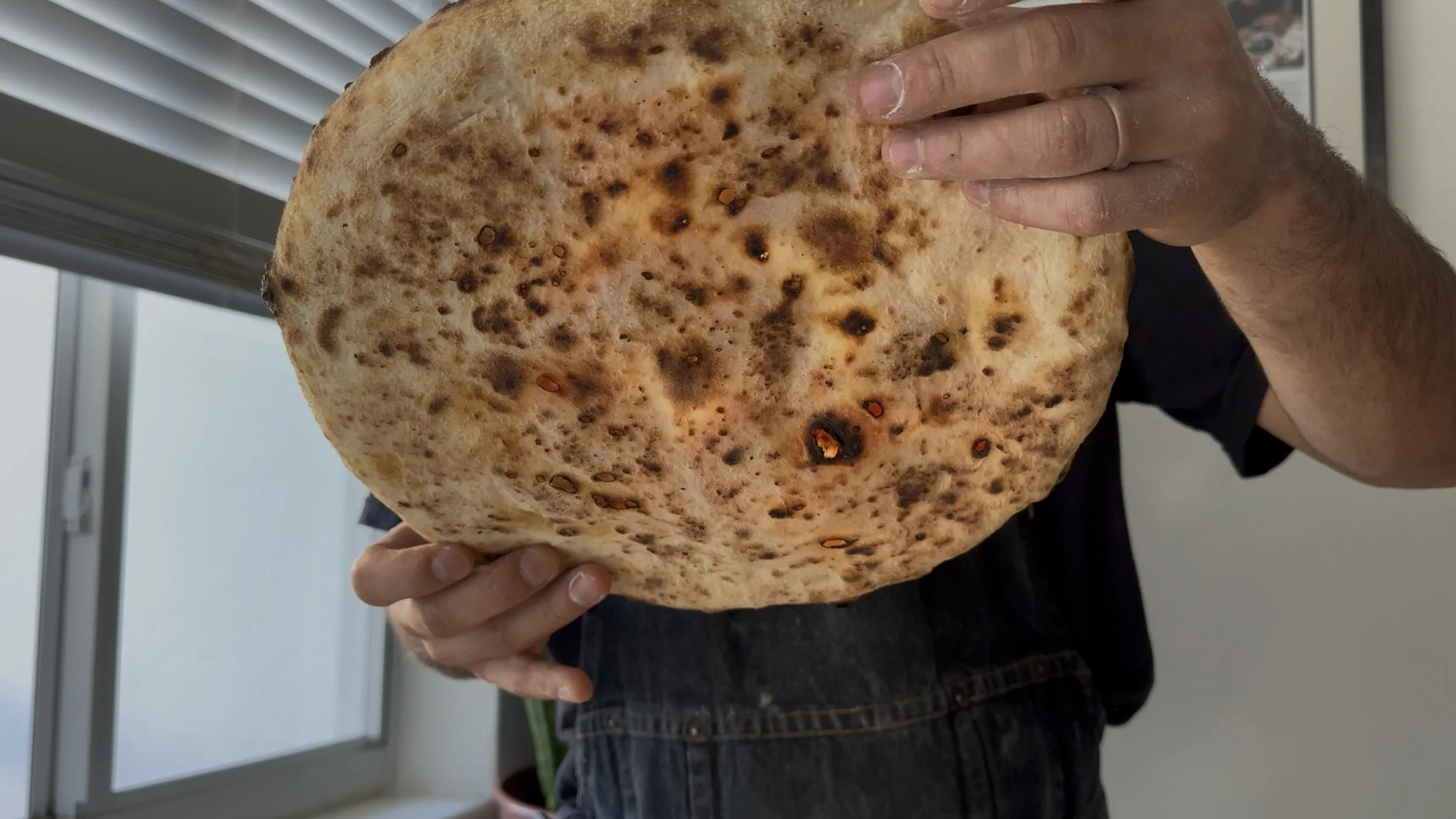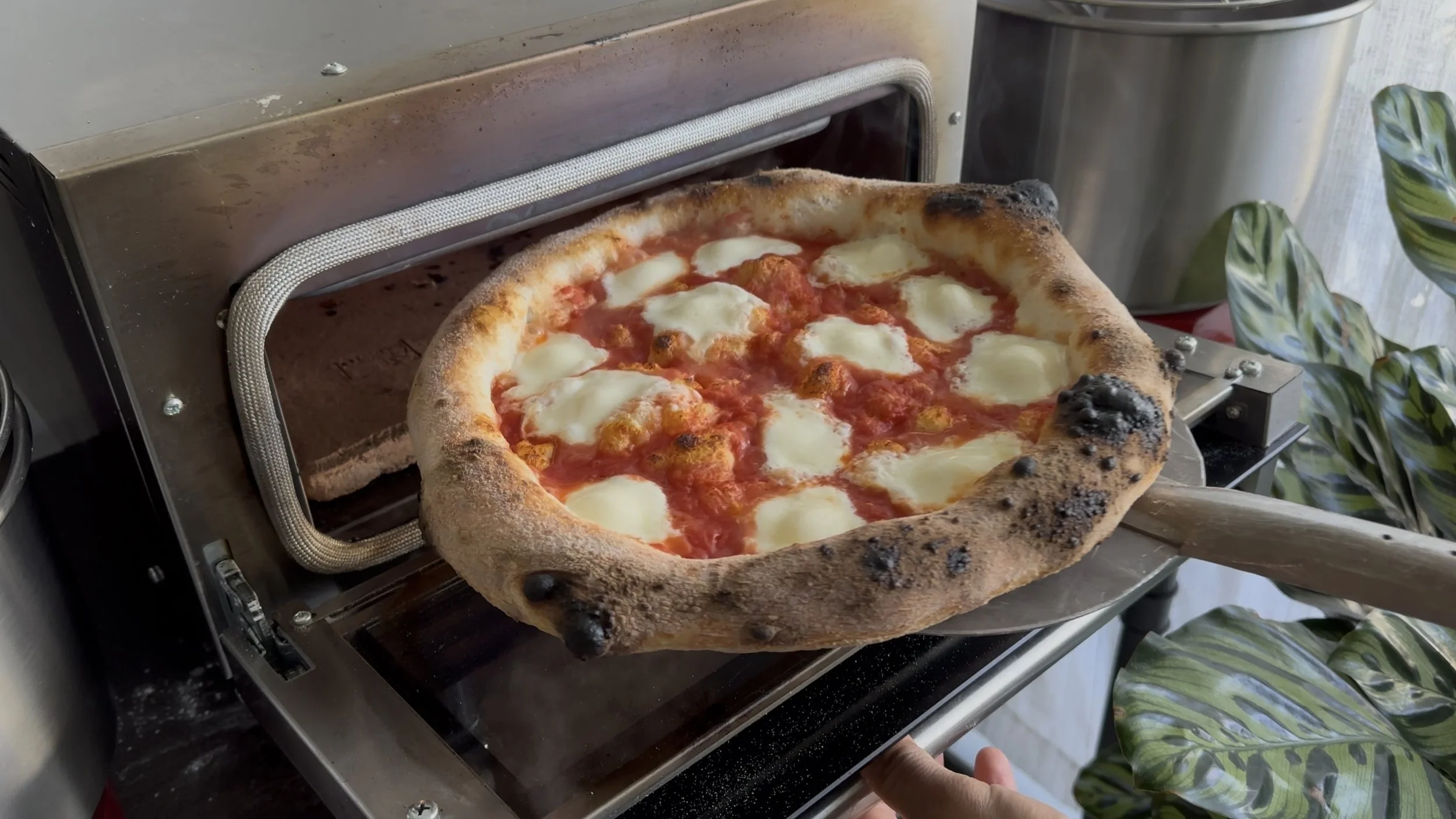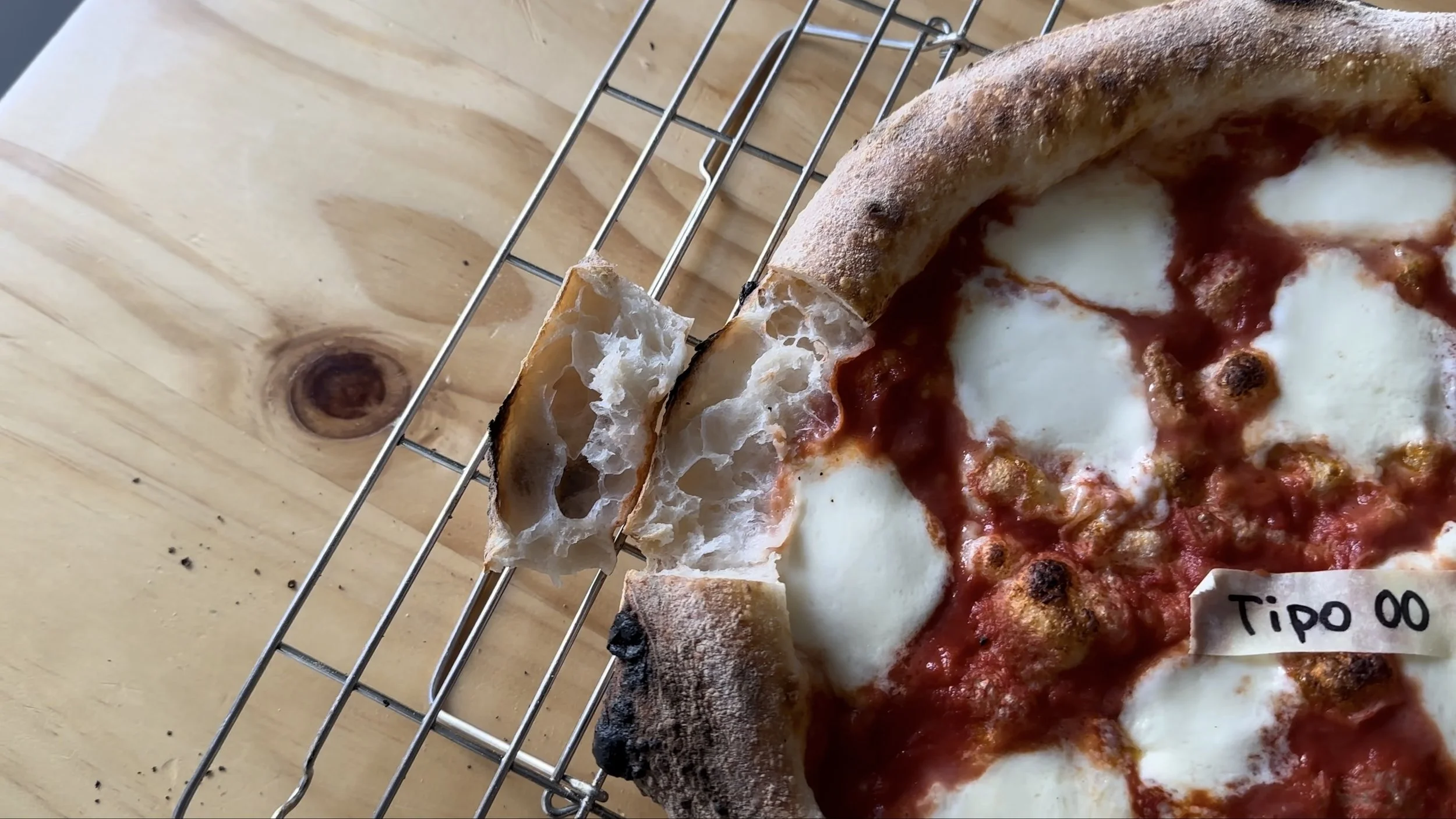Flour Comparison

The Ultimate Flour Comparison for Pizza Making
Three of the most common flours found in any supermarket:
🌾 All-Purpose Flour:
Soft, Light, and Delicate
Mixing:
Despite its lower protein content, all-purpose flour absorbed water impressively well. It took about a 10-minute mix, and while it developed some gluten, the dough felt gentler and a bit fragile. Balling was a little tricky — it tore slightly, feeling soft and jiggly with less resistance.
Fermentation:
During proofing, the dough held together but lacked some of the internal strength of bread or 00 flour. It fermented nicely, though it stayed on the softer, less structured side.
Final Bake & Crust:
The baked crust was the lightest of the three — airy, with an open crumb and slightly less rise. It had a gentle chew and a thin, delicate texture. The flavor was mild and almost bland— clean, but not as deep or toasty as the others.
Verdict:
All-purpose flour makes for a light, easy-eating pizza with a tender crust. Perfect for quick doughs or those who prefer a softer, more delicate bite.
🍕 00 Flour:
Smooth, Extensible, and Refined
Mixing:
The 00 flour started off looking shaggy, but as it mixed — for a full 12 minutes, the longest of the three — it transformed into a silky, hydrated dough. Its fine milling created the smoothest texture and the most extensible gluten structure. Sometimes a longer mix is a better mix! (More time for gluten development.)
Fermentation:
00 dough is incredibly forgiving. It holds up beautifully during long fermentation, remaining strong and easy to handle. During balling, it was the most satisfying — you could fold and shape it repeatedly without tearing. It formed a round, tight, picture-perfect dough ball that stood tall and even.
Final Bake & Crust:
This flour produced the most flavorful and texturally complex crust — crisp and flaky on the outside, yet tender inside. It wasn’t chewy like bread flour but had a delicate snap and a rich, toasty aroma reminiscent of popcorn and grains.
Verdict:
00 flour creates a refined, balanced pizza — strong, extensible, and deeply flavorful. It’s the gold standard for Neapolitan-style doughs and high-heat ovens.
🍞 Bread Flour:
Strong, Structured, and Classic
Mixing:
Bread flour forms a strong gluten network quickly. After a 9-minute mix, the dough felt tight and elastic. Balling the dough was easy — it held shape beautifully, forming a compact and resilient ball.
Fermentation:
This dough ferments aggressively. By the time it was fully proofed, it was almost pushing the limits — full of gas, structure, and strength.
Final Bake & Crust:
Bread flour produced a darker, deeply caramelized crust with great oven spring. The result was a sturdy yet fluffy interior, strong enough to hold its shape with minimal flop. The texture leaned chewy with a crisp outer bite — a solid, dependable crust with beautiful browning and satisfying chew.
Verdict:
If you love a pizza that’s hearty and chewy, with that traditional “New York” style sturdiness, bread flour delivers exactly that.
⚖️ Final Thoughts: Which Flour Should You Use?
Bread Flour:
For structure, chew, and dark caramelization. Ideal for New York or pan-style pizzas.
All-Purpose Flour:
For a soft, light, and easy pizza with minimal fuss.
00 Flour:
For smooth, extensible, and high-heat Neapolitan-style pizzas with depth of flavor. Blending this with some bread flour may be the key to amazing dough.
Each flour brings something unique to the table.
The best one depends on your oven, style, and what kind of crust you dream about when you crave pizza.
Julian Sisofo













